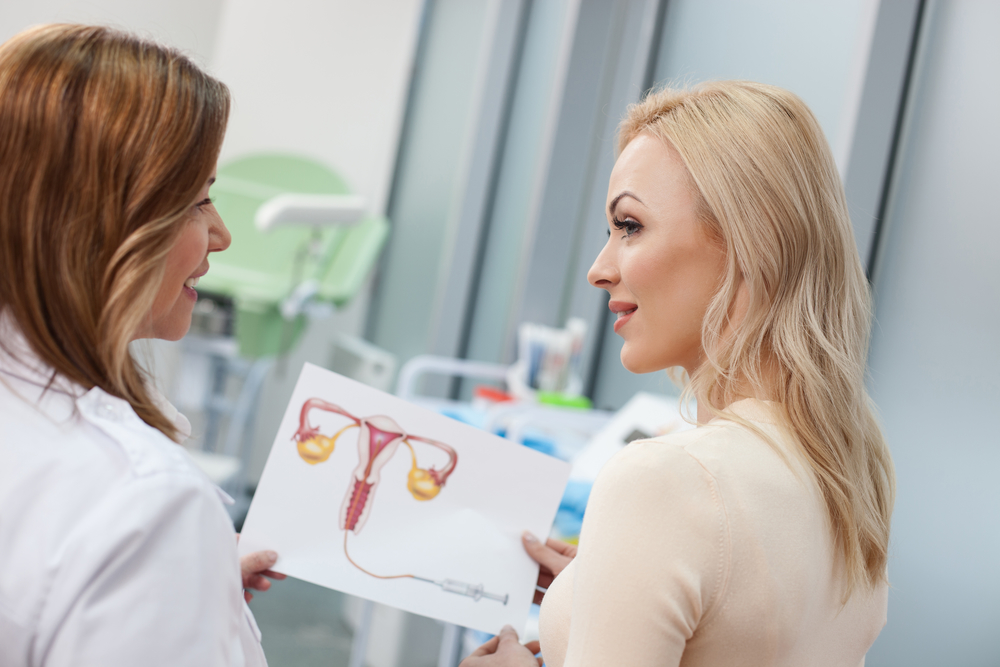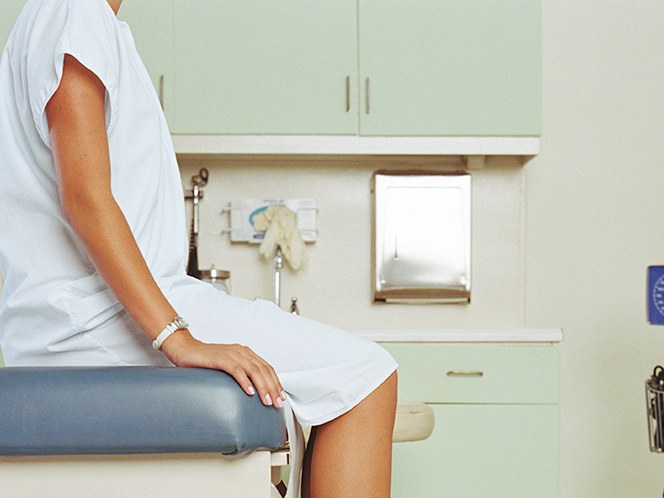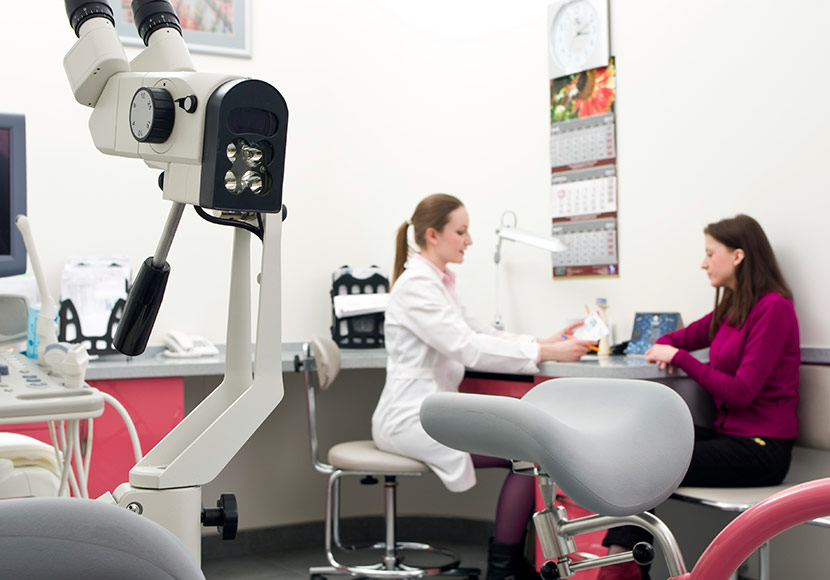Neoplasms occur against the background of changes in the usual work of the body. In reproductive age, women are more often diagnosed with functional neoplasms, and in postmenopausal women, cysts are more often of the organic type. Consider further the symptoms and treatment of menopausal ovarian cysts. Most often, women are interested in the need for surgical intervention. Surgery is necessary if the neoplasm is malignant, grows rapidly, or the patient complains of severe pain. In any case, the tactics of treatment can be determined only after visiting a doctor and all the necessary studies.
Who is at risk?
This problem is associated not only with hormonal imbalance. In a woman's life, there may be other factors that can provoke the appearance of an ovarian cyst after menopause. Neoplasms are usually diagnosed closer to fifty years old or with premature menopause. Often, an ovarian cyst in menopause is detected in the absence of past pregnancies, frequent bleeding during the intermenstrual period, ovarian dysfunction, systematic inflammatory processes of the reproductive system earlier, frequent infectious diseases. There are no drastic changes. The cyst can increase gradually, without showing up. For this reason, a woman should regularly visit a gynecologist to identify possible disorders in the early stages. In addition, you need to pay attention to the nature of vaginal discharge. Any changes may indicate any violations.

Main symptoms
The ovarian cyst during menopause manifests itself in different ways. It is necessary to take into account the type of neoplasm, characteristics, the presence of concomitant gynecological diseases and the patient's age. If the neoplasm appeared relatively recently and does not increase in size, then there may be no symptoms at all. Occasionally, women complain of mild discomfort, but in most cases these signs of the patient are associated with the unpleasant consequences of withering.
As the cyst enlarges, extra pounds, constipation, uterine bleeding after cessation of menstruation, frequent urination (including false ones), pain during menstruation and cycle failures in the premenopause, vomiting that does not bring relief, and nausea may appear. Many report symptoms of menopausal ovarian cysts such as discomfort during intercourse, pain during physical exertion, or active movement. Body temperature can rise up to 39 degrees. If the cyst grows, the abdomen may enlarge, there are frequent pains in the lower abdomen, which become more intense over time.
In each case, neoplasms increase in different ways. The number of signs of pathology and their intensity will vary. After a planned examination, you can accurately establish the nature of the formations and choose the appropriate treatment tactics.

Varieties of cysts
Ovarian cysts during menopause do not form functional. This is due to the lack of egg growth. Most often, the neoplasms that appear have an epithelial character. The cyst may be serous. This type develops in 60-70% of patients. The formation is distinguished by a single-chamber structure, a dense shell and a rounded shape. In most cases, it develops in only one ovary. Bilateral neoplasm requires more serious treatment.
In 13% of cases, papillary cystadenoma is diagnosed. The main difference of such a neoplasm is the presence of parietal growths. Ultrasound in this case can be noted papillae on the epithelium. Mucinous cystadenoma is characteristic only in 11% of cases. The neoplasm increases rapidly, which leads to a large cyst. Fortunately, the pathology is easily diagnosed.
Endometrioma is observed in only 3% of patients. Pathology occurs against the background of the ingrowth of the uterine mucosa into the ovaries. It has a characteristic color due to the presence of fluid inside. There are small cysts of this type (two to three centimeters) and rather large (about 20 cm). Before starting treatment, it is important to accurately determine the type of education in order to choose the optimal scheme.

Diagnostic Methods
Menopausal ovarian cysts require immediate treatment. It is very important to establish the cause of the appearance of alarming symptoms. An ovarian cyst is diagnosed, for example, using a pregnancy test. Symptoms are very similar to signs of an ectopic pregnancy, and persist in premenopausal women. When visiting a gynecological office, the doctor can determine the increase in appendages or other causes of pain in the lower abdomen.
An informative diagnostic method is ultrasound. This will not only confirm or deny the presence of neoplasms, but also help to monitor the development in dynamics. Two sensors are used for research: transvaginal and transabdominal. A method of studying a cyst and its treatment is laparoscopy. CT will allow the doctor to determine the nature of the neoplasm, the exact location, size and other indicators that are necessary in preparation for removal of the cyst.
Additional diagnostics
A general blood test is required to determine hormone and tumor markers. Sometimes a puncture of the posterior wall of the vagina is performed, with the help of which the presence of blood or fluid in the abdominal cavity is determined. After all these studies, the doctor will receive enough information to confirm the diagnosis and prescribe the appropriate medication. Based on the data obtained, the need for surgical intervention is also evaluated.

Drug treatment
Treatment of ovarian cysts in menopause with medication is possible only at the very beginning of menopause, when the reproductive system is still able to independently fight the tumor. But before that, it is important to completely exclude cancer. Actively used in the treatment of ovarian cysts in menopause is hormone replacement therapy. Combined drugs are used: Ovidon, Divina, Klimonorm, Femoston, Klimen, Revmelid.
Taking progestins
In some cases, only progestins are allowed. The doctor may prescribe Dufaston or Utrozhestan, Iprozhin, Prajisan, Norkolut. Of the listed drugs, Dufaston is most actively used. The same drug is prescribed after removal of the ovaries. The gynecologist can determine the appropriateness of using the drug, taking into account the following factors: the presence or absence of concomitant diseases of the genitourinary system, the presence or absence of menstrual flow, the nature of the discharge, a complete picture of the hormonal background, the duration of the menopause at the moment. The dosage regimen is developed individually for each patient, because the drug is used in a large number of cases.

Other drugs
In the treatment of follicular ovarian cysts in menopause, medications are also prescribed that block the pathological development of cells and restore the protective functions of the body. Of the antitumor drugs (antiestrogens), Tamoxifen, Novofen, or Bill are prescribed. Some women choose homeopathy. It can be “Kalium”, “Likopodium”, “Kantaris”, “Apis”, “Baromium” and others.
Additionally, the doctor may recommend taking various multivitamin complexes, means to improve the body's immune defenses, anabolic hormones, painkillers, anti-inflammatory pills in the vagina (or putting anti-inflammatory suppositories).
Surgery
No intervention can be dispensed with if the ovarian cyst is small in menopause, does not increase in size, and the doctor does not find any prerequisites for complications. Surgical intervention can be carried out by two methods. A laparoscopy or laparotomy is performed. With laparoscopy, minimal intervention occurs, and the woman recovers faster. If the neoplasm is significant, then a laparotomy is needed. During this operation, the doctor makes significant incisions, not small incisions. With laparotomy, general anesthesia is used.
Laparoscopy and laparotomy
With laparoscopy, only two or three small incisions are made (5 mm each). Small incisions heal faster and easier, there is no postoperative scar. This operation is characterized by low blood loss. A few hours after the intervention, a woman can independently stand up and move around. The patient needs in-patient monitoring for only two to three days, after which the woman is discharged home. After a laparotomy, the patient remains in the hospital for two to four days, but the recovery period takes about four to six weeks. Only after this can you return to your previous lifestyle.
Complications are possible: infection, damage to the bladder or intestines, adhesions in the abdominal cavity, pain.

Folk remedies
In any other period of life or in menopause, a cyst (left ovary, right - it does not matter) is not treated with folk remedies. But recipes of traditional medicine will help support the body and make drug treatment more effective. Most often, for infusions and decoctions, celandine, walnuts, honey, onions, a pine forest, raisins are used. A good prevention of the development of neoplasms is the presence in the diet of different types of cabbage. A vegetable contains substances that can normalize hormonal balance and make estrogen metabolism less active.
With adequate and timely treatment, an ovarian cyst in menopause does not develop into malignant tumors. Therefore, you should not be afraid to visit a gynecologist and take all the necessary tests. It is necessary to strictly follow the recommendations of the gynecologist, take the drugs according to the plan and try to make life as comfortable as possible, excluding stress factors. In addition, proper nutrition and moderate physical activity are very useful.

Delete or not?
In some cases, the doctor may suggest that the woman undergo surgery or try to carry out drug treatment. Should an ovarian cyst be removed in menopause? To determine whether it is possible to refuse an operation without health consequences, it is possible only taking into account the menopause, the type of neoplasm (one-sided or two-sided), the density of the cyst, the zones affected by it, and the fluid content inside. It is important to establish exactly whether the cyst is cancerous or not. If the neoplasm is benign, then removal may not be required. However, in this case, the woman needs to undergo systematic examinations and examinations so that doctors can monitor the “behavior” of the neoplasm.
The patient is at risk if a sharp increase, a change in the appearance or color of the cyst is detected. Only the neoplasm or the entire ovary can be removed. With oncology, the appendages of the uterus are most often removed from two sides. The operation is also necessary if the woman suffers from constant discomfort, and the neoplasm has a size of more than five centimeters.
Possible complications
The likelihood of developing ovarian cysts in menopause increases by 15-20%. Pathology requires quick action and timely diagnosis. In the absence of treatment, the following complications may occur: cyst twisting, rupture, overgrowing into a malignant neoplasm. A mobile cyst can cause kinking. In this case, the patient complains of very severe pains, a significant increase in temperature is noted, there is a feeling of nausea, single or multiple vomiting, spotting from the vagina.

With a break, a sudden pain occurs. This requires urgent surgical intervention, otherwise the blood loss may be too big and threaten the woman's life. As a result, adhesions and scars in the internal organs may occur. Adhesions exist normally, but with pathology they form in a significant amount, which is not good. The most dangerous complication is degeneration into a malignant formation. If the cyst is not treated for a long time, then it can become malignant. That is why you should regularly visit a gynecologist, even after the extinction of reproductive function.